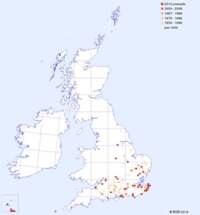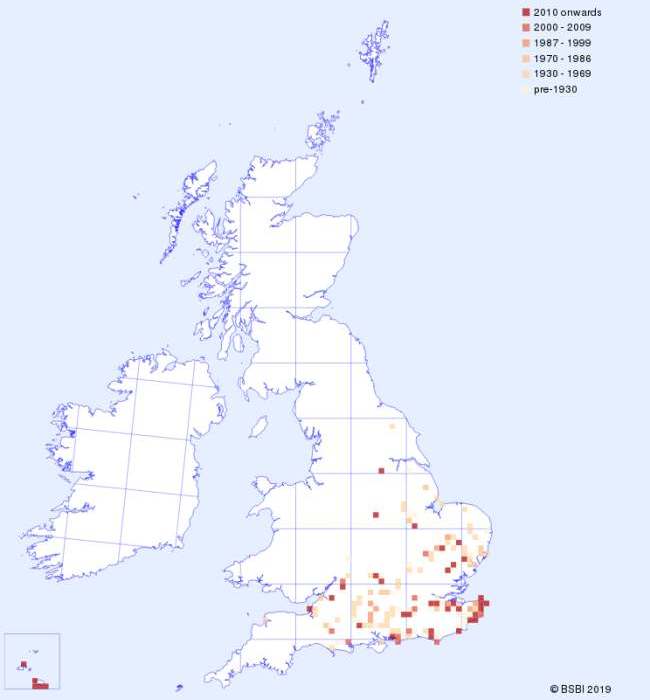'Once seen never forgotten' is the response of most people to finding their first Lizard Orchid. Its impressive size (up to a metre tall) and the unique structure of the lizard-like flowers, which vary in colour from greyish-green to purple, make it impossible to confuse with any of the other orchid species that occur in Britain. Classified as Near Threatened in Britain, the fluctuations in the Lizard Orchid's range and numbers make it difficult to assess accurately whether this is actually a success story or a potential failure. Although it has disappeared from its few former sites in the north of England, populations in Kent (Sandwich Golf Course is its most famous location) remain strong, and Himantoglossum hircinum plants pop up frequently, but sporadically, on new sites in other counties. Several of the recent 'new' sites have been on golf courses, leading to the suggestion that seed may have been inadvertently carried from one course to another by golfers. Other favoured habitats include field margins, sand dunes, scrub, woodland edges, and roadside verges where it easily competes with tall rank grasses. Sometimes growing on neutral soils, this orchid is more common on calcium-rich substrates. Lizard Orchid flowers from mid-May to the end of July, peaking in mid-June. On mainland Europe Himantoglossum hircinum grows from Holland and Germany in the north to as far south as Spain. In some parts of France this species can only be described as a 'roadside weed' - albeit a most welcome one. The flowers are said to smell strongly of billy goat.
| Distribution Map | Key Features | |
 |
Records for the Lizard Orchid from BSBI are shown on the map with most recent in front. (Hover the mouse over the small map to expand it.) |
Plant: size variable, usually around 30cm in height but occasionally up to 100cm; stem pale green marked with purple, ridged towards the tip; 2 or 3 scale leaves situated at the base. |
Image Gallery for Lizard Orchid Himantoglossum hircinum
| Pollination | Taxonomy & Hybrids |
The main pollinators are various bees, but the plants are visited my many other insects including butterflies and night-flying moths. Nectar is not produced by this orchid, but the strong smell of the flowers may attract insects, particularly at night. Self pollination is possible but it is thought to be rare, as is vegetative reproduction. |
The specific name hircinum means 'of goat' and refers to the smell of the flowers. |
Articles about Lizard Orchid in JHOS
